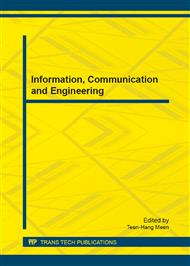p.343
p.348
p.354
p.360
p.366
p.375
p.380
p.386
p.392
Culture-Driven Product: Creating an Cultural Engagement with Historical Heritage
Abstract:
While facing an increasingly borderless competitive global economic environment, the development of culture-driven products industries has become the dominant issues of the local economic policy. Attracting tourism by pushing the interest of people to the local culture, particularly through consuming experiences of culture-driven products, is a current trend in urban competitiveness. Cultural products are popular instruments representing local culture. They translate messages, narrate memories and historical events, and establish an emotional connection with people. This study explores the possibility of using cultural products as a city marketing strategy for the former Tainan State Magistrate Residence, which can be integrated with other cultural zones to represent Tainan City. The Tainan City government registered it as a city-level historical heritage site and completed its restoration and reuse plan in 2000. However, no practical marketing strategy has been formulated to promote the site and to raise cultural awareness among both locals and tourists. The present study adopts an empirical case generated from an outing course: a one-day cultural learning tour involving 61 student participants in the former Tainan State Magistrate Residence. Many rich identifiable cultural features were derived from the experience of the participants, which were transformed into unique and irreplaceable cultural product ideations. The findings of the case study provide a clear understanding of the dynamic relationship among cultural products, city heritage, and city marketing, which strengthens the potential of cultural storytelling through the design of cultural products for city image promotion and urban regeneration. They provide practical designers, urban planners, and policy makers a view of the importance of cultural communication media through products.
Info:
Periodical:
Pages:
366-371
Citation:
Online since:
February 2013
Authors:
Price:
Сopyright:
© 2013 Trans Tech Publications Ltd. All Rights Reserved
Share:
Citation:


